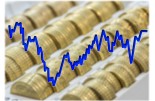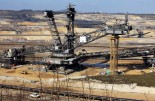Monex Europe: Oil prices to remain sideshow for European economy

Nicholas Rees, FX Market Analyst at Monex Europe, comments on the impact of a cut in oil production.
For those that have been around long enough, news over the weekend that OPEC+ members were looking to cut oil production in an effort to prop up prices may have brought back uncomfortable memories of a similar event that occurred half a century ago. Back then, the resulting supply shocks triggered a bout of inflation that rippled through western economies for the next two decades and required several policy induced recessions to tame.
Despite some scaremongering headlines that have appeared in recent days, we would caution against drawing such parallels. In our view, policymakers have bigger fish to fry and the impact of this move on the global economy should be minimal.
As we see it, there are two key reasons to think the current actions by OPEC members will have a far more limited impact on Europe’s economy today. First, is the extent to which this most recent supply cut moved markets. The embargo imposed by OPEC in the early 1970s had raised the price of oil four-fold in nominal terms by 1974.
By contrast, the most recent intervention raised oil prices from roughly $75 per barrel to $80. This is a several orders of magnitude difference. Whilst not great if you drive a car, for sure, but a relatively small move in context. In fact, a simple estimate based on the contribution of energy and fuel costs to the European HICP basket, would suggest an upper bound of just a 0.6pp increase in headline inflation, and the actual contribution being only a fraction of that.
With eurozone CPI currently running at 6.9%, this is a rounding error. This is not unsurprising, given that there is good reason to think European economies should be far less sensitive to the price of oil now, than they were 50 years ago. Decades of government policy that pushed more efficient vehicles, and a switch in energy generation to renewables and gas, means that the reliance of European economies on oil is vastly reduced. Where consumers do still pay fuel prices, the impact on wallets of a move upwards in oil is further dampened by the fact that, in many countries a large percentage of pump prices is tax.
Perhaps the most important reason not to worry, however, is that the ECB faces a core inflation problem, a measure the conveniently strips out the impact of fuel prices. In this economic context, given that they have more important worries to deal with, policymakers will not be too concerned by a marginal move in fuel prices.
More importantly, core inflation also represents the domestically driven inflation pressures that policymakers have a mandate to fight. This reading currently stands at 5.7%, having ticked up yet again in the last month, despite hopes it may begin to stabilise in the face of increasingly tight policy.
For that reason, market expectations of the ECB have become progressively more hawkish, with some amongst the Governing Council (Robert Holzmann) currently advocating for another 50bp hike. With expectations much more pessimistic in the US, the narrowing in rate differentials has been one of the main drivers behind EURUSD’s rally back towards the 1.10 level, and should be a primary driver for a medium-term bullish view on the euro.
We agree with the more hawkish adjustment in eurozone rates markets. The ECB will continue to raise rates, either until core inflation is comfortably under control, or they break something in the economy that cannot be easily fixed. Whilst this latter eventuality would also tame inflation, likely scenarios such as banking blowups, come with rather unpleasant side effects that the ECB would prefer to avoid.
Ultimately, the path for monetary policy and therefore the euro, will be determined by the evolution of core inflation and the rising risk of financial instability, with oil prices to remain a sideshow.










